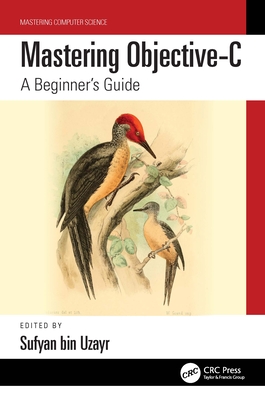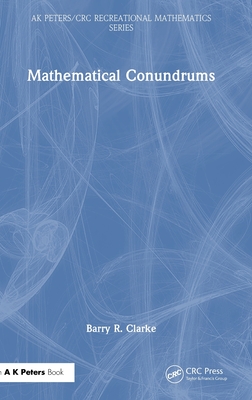图书简介
Microbial Physiology: Unity and Diversity takes readers on a captivating journey through the intricate and often underappreciated world of microbial physiology, emphasizing both the common features that unify microbes and the diversity that makes them unique. In Part I: Unity, the book lays a strong foundation in the basics of microbial physiology. Delve into the three domains of life, get an intimate look at the metabolic pathways that fuel the microbial world, and take a deep dive into the cellular components that constitute a microbe. Further, explore the principles of cellular growth, bioenergetics, and the mechanics of respiration and fermentation. The Unity section concludes with a comprehensive discussion of regulation at posttranslational and gene levels, paving the way for a rich understanding of microbial function. Part II: Diversity, takes the reader into the broad and versatile world of microbial metabolism, exploring the range of energy sources and metabolic pathways microbes employ. This section leads readers through topics such as autotrophy, phototrophy, chemotrophy, and microbial contributions to the carbon, sulfur, and nitrogen cycles. The complexity of microbial cell envelope structures, transport processes, and protein transport are explored, along with bacterial motility, chemotaxis, and the phenomenon of quorum sensing. The section concludes with an exploration of stress responses and the diverse lifestyles that bacteria can adopt. Microbial Physiology: Unity and Diversity will engage readers with its accessible yet thorough treatment of this critical field of microbiology. Each chapter contains detailed illustrations that concisely explain complex topics and concludes with robust end-of-chapter questions that not only test understanding but also provide an opportunity for readers to dig deeper into the content. This book is a must-have for students studying microbiology, as well as researchers and professionals keen to brush up their knowledge or explore new facets of microbial physiology.
1. Microbial Phylogeny: The Three Domains of Life The Three Branches of Life: Bacteria, Archaea, and Eukarya The 16S/18S rRNA Gene as a Basis for Phylogenetic Comparisons The Modern Molecular Phylogenetic Tree of Life Phylogenetics and Earth History 2. Metabolic Unity: Generation of Biosynthetic Precursors The Purpose of Central Metabolism The 12 Essential Precursors The Embden-Meyerhof-Parnas (EMP) Pathway (Glycolysis) Structure and Energy Exchange of Key Coenzymes Controlling the Direction of Carbon Flow during Glycolysis The Pentose Phosphate Pathway (PPP) The Entner-Doudoroff (ED) Pathway The Transition Reaction: Carbon Flow into the Tricarboxylic Acid (TCA) Cycle The Tricarboxylic Acid Cycle Anaplerotic Reactions The Branched or Incomplete Tricarboxylic Acid Pathway The Glyoxylate Cycle Reversing Carbon Flow from the Tricarboxylic Acid Cycle to the Embden-Meyerhof-Parnas Pathway 3. Cellular Components: What?s in a Cell Estimating Molecular Concentrations Physiologically Relevant Protein Concentrations Measuring Enzyme Activity: Basic Principles of Enzyme Assays Michaelis-Menten Kinetics Studying the Proteome The Physiological Role and Composition of Cellular RNA The Physiological Role and Composition of Cellular DNA Studying the Genome and the Transcriptome 4 Cellular Growth Methods to Monitor Bacterial Growth The Phases of Bacterial Growth in Batch Culture Requirements for Microbial Growth Diauxic Growth Exponential Growth Kinetics Chemostats Characteristics of Stationary-Phase Cells Proteins Important for Cell Shape and Cell Division Chromosome Segregation 5. Bioenergetics and the Proton Motive Force Cellular Mechanisms for ATP Synthesis Chemiosmotic Theory Chemiosmotic Theory ATP Synthase The Proton Motive Force (PMF) Quantifying the Proton Motive Force Cellular Proton Levels Environmental Impacts on the Proton Motive Force Experimentally Measuring the Proton Motive Force 6. Respiration and Fermentation The Basic Components of an Electron Transport Chain Electrode/Redox Potential (E0) Brief Review of the Electron Transport Chain in Mitochondria Q Cycle of Mitochondria Bacterial Electron Transport Chains Q Loop of Bacteria Electron Donors and Acceptors in Bacteria Fermentation 7. Regulation: Posttranslational Control Importance of Regulatory Processes Allosteric Regulation of Enzymes Allosteric Regulation of Branched Pathways Covalent Modifications Posttranslational Regulation in the Sugar Phosphotransferase System 8. Gene Regulation: Transcription Initiation and Posttranscriptional Control Transcription Terminology Bacterial Transcription Initiation and Elongation Bacterial Transcription Termination Regulatory cis- and trans-Acting Elements Impacting Transcription Examples of Different Promoter Structures Transcriptional Regulation of the lac Operon Activation and Repression by the Global Regulator Cra Attenuation Posttranscriptional Regulation Methods Used to Study Gene Regulation Methods to Demonstrate Protein?DNA Interactions Interlude: From Unity to Diversity Metabolic Diversity Global Nutrient Cycles Structural and Regulatory Diversity of Microbes 9. Autotrophy Autotrophy Calvin Cycle Reductive Tricarboxylic Acid Cycle Reductive Acetyl-CoA Pathway 3-Hydroxypropionate Bi-cycle 3-Hydroxypropionate/4-Hydroxybutyrate and Dicarboxylate/4-Hydroxybutyrate Cycles Why So Many CO2 Fixation Pathways? 10. Phototrophy Phototrophy Chlorophyll-Based Phototrophy Cellular Structures Needed for Phototrophy: Light-Harvesting Complexes, Reaction Centers, and Unique Membrane Organizations Oxygenic Photoautotrophy in the Phylum Cyanobacteria Anaerobic Anoxygenic Phototrophy in the Phototrophic Purple Sulfur and Purple Nonsulfur Bacteria Anaerobic Anoxygenic Phototrophy in the Phyla Chlorobi and Chloroflexi (Green Sulfur and Green Nonsulfur Bacteria, Respectively) Anaerobic Anoxygenic Photoheterotrophy in the Firmicutes Aerobic Anoxygenic Phototrophy Retinal-Based Phototrophy 11. Chemotrophy in the Carbon and Sulfur Cycles The Carbon Cycle The Chemoorganotrophic Degradation of Polymers The Chemoorganotrophic Degradation of Aromatic Acids Chemoorganotrophy in Escherichia coli Chemolithoautotrophy Chemolithoautotrophy in Methanogens Methylotrophy Enables Cycling of One-Carbon Compounds One-Carbon Chemolithotrophy in Acetogens The Sulfur Cycle Chemoheterotrophy and Chemolithoautotrophy in the Sulfur Cycle: Sulfate Reducers Chemolithoautotrophy in the Sulfur Cycle: Sulfur Oxidizers The Anaerobic Food Web and Syntrophy 12. Microbial Contributions to the Nitrogen Cycle Overview of the Nitrogen Cycle Nitrogen Fixation Biochemistry of Nitrogen Fixation Regulation of Nitrogen Fixation Symbiotic Plant-Microbe Interactions during Nitrogen Fixation Assimilatory Nitrate Reduction Ammonia Assimilation into Cellular Biomass Nitrification: Ammonia Oxidation, Nitrite Oxidation, and Comammox Anammox: Anaerobic Ammonia Oxidation Denitrification 13. Structure and Function of the Cell Envelope Fundamental Structure of the Cytoplasmic Membrane Variation in Cytoplasmic Membranes Transport across Cytoplasmic Membranes Cell Wall Structures Gram-Negative Outer Membrane Periplasm Additional Extracellular Layers 14. Transport and Localization of Proteins and Cell Envelope Macromolecules Introduction to Cytoplasmic Membrane Protein Transport Systems Secretory (Sec)-Dependent Protein Transport System The Secrectory (Sec)-Dependent Protein Transport Process Signal Recognition Particle (SRP)-Dependent Protein Transport Process Twin-Arginine Translocation (Tat) Protein Transport Process Integration of Cytoplasmic Membrane Proteins Gram-Negative Bacterial Outer Membrane Protein Secretion Systems Secretory (Sec)- and Twin-Arginine Translocation (Tat)-Dependent Protein Secretion Systems Secretory (Sec)-Independent and Mixed-Mechanism Protein Secretion Systems Importance of Disulfide Bonds Transport and Localization of Other Cell Envelope Components 15. Bacterial Motility and Chemotaxis Motility in Microorganisms Bacterial Flagella and Swimming Motility Regulation of Flagellar Synthesis in Escherichia coli Mechanism of Swimming Motility Archaeal Flagella Bacterial Surface Motility Chemotaxis Conservation and Variation in Chemotaxis Systems among Bacteria and Archaea Methods to Study Bacterial Motility and Taxis 16. Quorum Sensing Fundamentals of Quorum Sensing Quorum Sensing and Bioluminescence in the Vibrio fischeri-Squid Symbiosis Basic Model of Quorum Sensing in Gram-Negative Proteobacteria Basic Model of Quorum Sensing in Gram-Positive Bacteria Interspecies Communication: the LuxS System Regulatory Cascade Controlling Quorum Sensing in Vibrio cholerae Quorum Quenching 17. Stress Responses Oxidative Stress Heat Shock Response Sporulation 18. Lifestyles Involving Bacterial Differentiation A Simple Model for Bacterial Cellular Differentiation: Caulobacter crescentus Differentiation in Filamentous Cyanobacterial Species Life Cycle of Filamentous Spore-Forming Streptomyces: An Example of Bacterial Multicellularity Life Cycle of Myxobacteria: Predatory Spore-Forming Social Bacteria Biofilms: The Typical State of Microorganisms in the Environment
Trade Policy 买家须知
- 关于产品:
- ● 正版保障:本网站隶属于中国国际图书贸易集团公司,确保所有图书都是100%正版。
- ● 环保纸张:进口图书大多使用的都是环保轻型张,颜色偏黄,重量比较轻。
- ● 毛边版:即书翻页的地方,故意做成了参差不齐的样子,一般为精装版,更具收藏价值。
关于退换货:- 由于预订产品的特殊性,采购订单正式发订后,买方不得无故取消全部或部分产品的订购。
- 由于进口图书的特殊性,发生以下情况的,请直接拒收货物,由快递返回:
- ● 外包装破损/发错货/少发货/图书外观破损/图书配件不全(例如:光盘等)
并请在工作日通过电话400-008-1110联系我们。
- 签收后,如发生以下情况,请在签收后的5个工作日内联系客服办理退换货:
- ● 缺页/错页/错印/脱线
关于发货时间:- 一般情况下:
- ●【现货】 下单后48小时内由北京(库房)发出快递。
- ●【预订】【预售】下单后国外发货,到货时间预计5-8周左右,店铺默认中通快递,如需顺丰快递邮费到付。
- ● 需要开具发票的客户,发货时间可能在上述基础上再延后1-2个工作日(紧急发票需求,请联系010-68433105/3213);
- ● 如遇其他特殊原因,对发货时间有影响的,我们会第一时间在网站公告,敬请留意。
关于到货时间:- 由于进口图书入境入库后,都是委托第三方快递发货,所以我们只能保证在规定时间内发出,但无法为您保证确切的到货时间。
- ● 主要城市一般2-4天
- ● 偏远地区一般4-7天
关于接听咨询电话的时间:- 010-68433105/3213正常接听咨询电话的时间为:周一至周五上午8:30~下午5:00,周六、日及法定节假日休息,将无法接听来电,敬请谅解。
- 其它时间您也可以通过邮件联系我们:customer@readgo.cn,工作日会优先处理。
关于快递:- ● 已付款订单:主要由中通、宅急送负责派送,订单进度查询请拨打010-68433105/3213。
本书暂无推荐
本书暂无推荐














